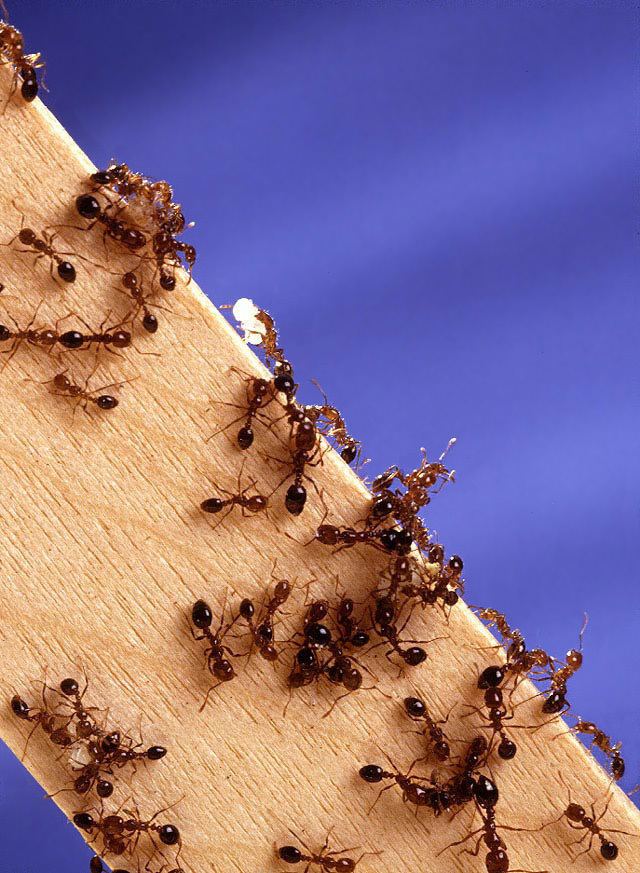 | ||
Ants are capable of biting, stinging and spraying irritant chemicals. Most have only a mild effect on humans; however, a few can cause injury or sometimes even death. Like wasps, individual ants are capable of stinging multiple times.
Contents
Fire ants
The fire ant Solenopsis invicta is a species that is expanding in range around the world and is most often involved in medical emergencies. The species is aggressive and has a painful sting. A person typically encounters fire ants by inadvertently stepping into one of their mounds, which causes the ants to swarm up the person's legs, attacking en masse. The ants respond to pheromones that are released by the first ant to attack. The ants then swarm and immediately sting when any movement is sensed. People who are sensitive to the venom can die of anaphylaxis. In a survey of 29,300 physicians in the United States of America (in 1989), reports of 83 fatalities were obtained. Some fire ant attacks on humans confined to beds have also been noted; in some locations, fire ants can be a particular threat in medical facilities since they can have nesting colonies inside human habitations.
Other species
Apart from Solenopsis invicta and Solenopsis richteri, serious allergic reactions are known from ants belonging to 6 different subfamilies (Formicinae, Myrmeciinae, Ponerinae, Ectatomminae, Myrmicinae, and Pseudomyrmecinae) and 10 genera (Solenopsis, Formica, Myrmecia, Tetramorium, Pogonomyrmex, Pachycondyla, Odontomachus, Rhytidoponera, Pseudomyrmex, and Hypoponera).
The Argentine ant, Linepithema humile is found in Argentina, Southern Europe, Southern USA and California. They are small and are found in human habitations. They often kill other ant species. They have been noted as having the potential to carry pathogens in hospital environments.
The pharaoh ant, Monomorium pharaonis is found around the world. It is not known for its sting, but has been involved in respiratory allergies.
Bulldog ants, from the genus Myrmecia, are native to Australia, with all but one of the ninety or so species found on the continent. Belonging to the ant subfamily Myrmeciinae, they are among the most primitive extant ants in the world. This species is known to cause some fatalities in sensitive humans.
Bullet ants, from the genus Paraponera, are found from Nicaragua southward to the Amazon Basin. They are and close relatives of the genus Dinoponera, which are New World ponerines known for their painful stings.
Driver ants, from the genus Dorylus, are found in the Old World, especially West Africa and the Congo Basin. Unlike the army ants of the New World, Old World army ants have a functional sting but rarely use it, preferring their razor-sharp, falcate mandibles for defense instead. Dorylus spp. colonies also reach larger sizes than Eciton.
The Pogonomyrmex maricopa, found in Western USA, are bright red myrmicine ants whose venom is the most potent of any ant species.
